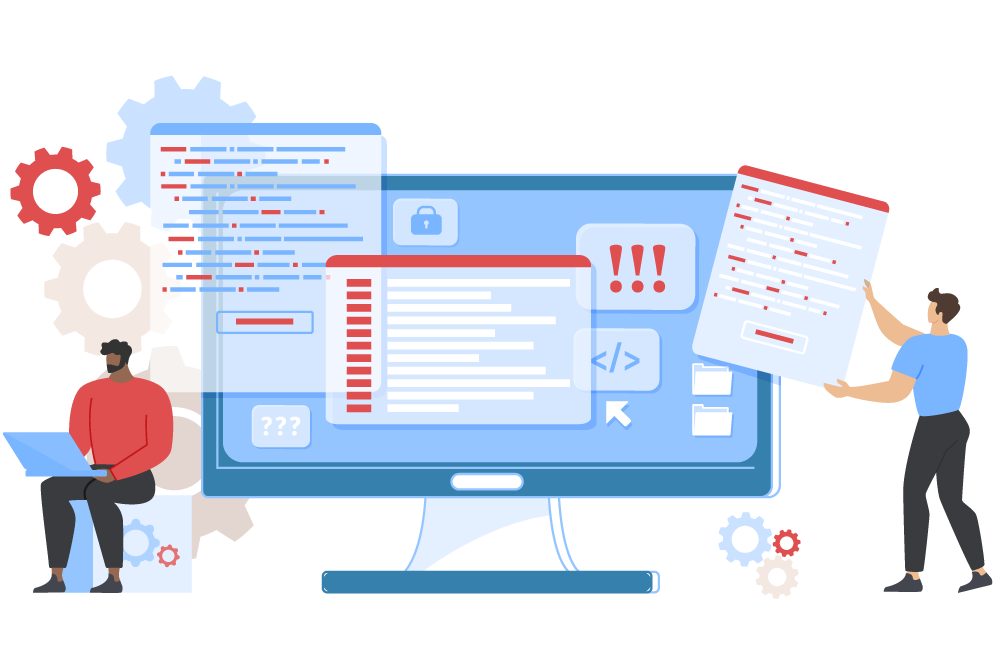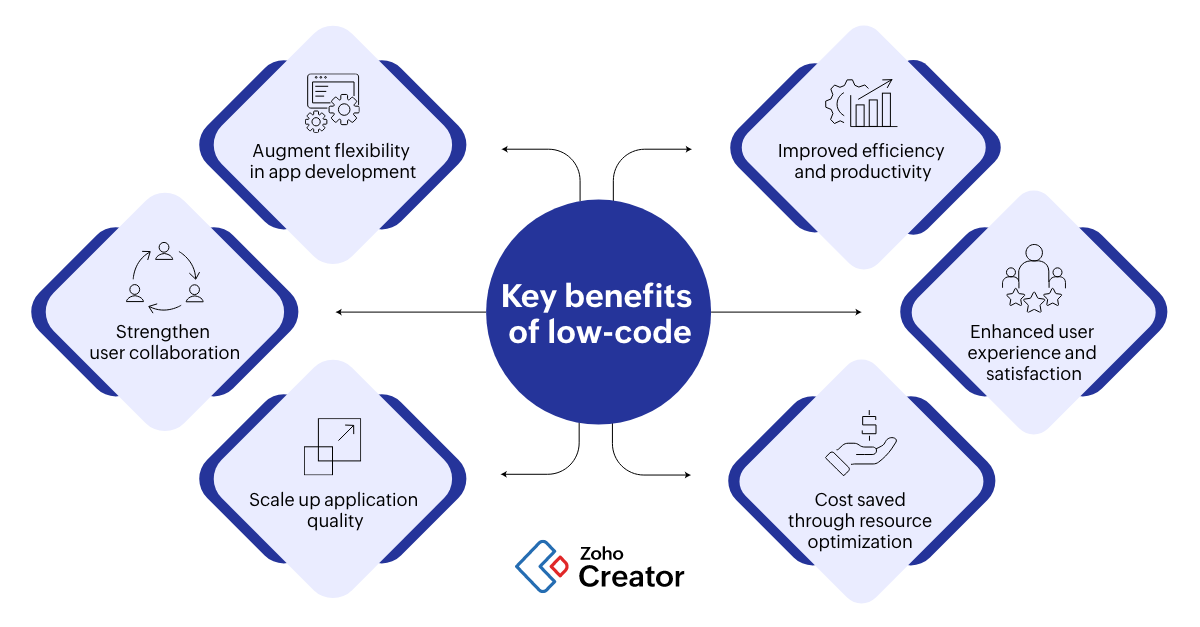Good Tips To Choosing Low-Code Platform Recommendations
Wiki Article
Benefits Of Low-Code Development To Non-Developers With Regard To Accessibility
Because of a variety of key factors, Low-code Application Development is a possibility for people who are not developers. They are also known as "citizen designers."
Drag-and-Drop Builders. Low-code platforms have drag-and-drop interfaces. This allows non-developers the ability to build applications in a visual manner, without writing code. The development process is now more accessible to those with no technical background.
WYSIWYG: WYSIWYG editors are "What you See is What you Get" editors that permit users to create workflows and interfaces similar as the final product. It makes it much simpler to understand and use.
Simple Logic and Workflow:
Visual Workflow Modeling - Users are able to design business processes and logic applications using visual flowcharts or models. This is a lot more simple than traditional programming methods.
Pre-built Logic Components: Low-code platforms often contain pre-built logic components (e.g. conditionsal statements, loops) that can be easily configured, reducing the need for complicated programming.
Reusable templates and components:
Template libraries that are pre-built: Many low code platforms provide libraries that covers the most popular types of applications, providing non-developers to have a foundation to build on and later modify.
Reusable widgets and modules The development of a website is simplified through the use of reusable components and modules. This reduces the requirement for technical expertise.
Guided Development and Tutorials
Step-byStep Guides: Platforms will often offer guided development paths, online tutorials, or screen-based instructions that can assist users who aren't developers to create applications.
Interactive Tutorials - Interactive tutorials which let you interact with the platform can aid in learning and increase confidence.
Integration with Existing Tools:
Seamless Integration - Low-code platforms can easily be integrated with existing systems and business tools (e.g. ERP, CRM) that give even non-developers the ability to build apps that are compatible to their workflows.
APIs connectors and APIs: These devices facilitate integration by allowing developers who are not (or even end users) to link their applications to external services.
Collaboration Features:
Team Collaboration: Features, such as real-time collaboration as well as shared workspaces, help professionals and non-developers to work together efficiently.
Access Control based on Role: Users who are not developers can be assigned specific roles with the appropriate access levels. This allows them to contribute to development without compromising security and performance.
Automated testing and debugging:
Low-code platforms include tools to test and debug that are built in. They automatize this process so it is easier for nondevelopers to ensure their apps work.
Error Highlighting: When problems arise the platform flags the errors and suggests solutions and guides non-developers through troubleshooting procedures.
The main benefit of low-code development in terms of accessibility to non-developers is its capacity to make development more accessible. Through providing clear, intuitive tools and guided experiences low-code platforms enable business users to participate actively in developing and maintaining applications, bridging the gap between business requirements and technical implementation. View the best see post for Low-code Platform for application development for site advice including low code development platforms, push notifications, push notifications android, cross platform mobile dev, application modernization software, lowcode no code, app modernization, push notifications, software for app development, developing mobile apps and more.

Benefits Of Low-Code Application Development In Terms Of Cost-Effectiveness
Low-code application creation offers many advantages in terms of cost-effectiveness. Companies trying to cut costs can benefit from this option while delivering quality applications. These are the main benefits: Reduced Development Costs:
Less Coding Requirements: The low codes platforms remove the requirement for complex, hand-coded applications. Developers can spend less time and effort creating applications. This results in lower costs of labor.
Fewer Developers: Because low code development is faster and easier, there are fewer specialized developers needed. This can dramatically reduce the cost of hiring and staffing.
Speedier time to market
Accelerated Cycle of Development Visual tools for low-code platforms and components enable rapid application creation, which allows companies to launch their new products quicker. This can lead to faster revenue generation as well as improved competitive positioning.
Rapid Prototyping: Businesses can quickly create prototypes and then test them, thus reducing the time required during the development process and allowing faster iterations based on feedback from users.
Lower cost of maintenance:
Simple Maintenance: Software developed using low-code platforms are generally easier to maintain due to their modular components and standard architecture. This helps reduce maintenance and support costs.
Automated Updates. Many low-code platforms manage updates and patch automatically. Applications are secure and safe without the need for extensive manual input.
Efficient Resource Utilization:
Low-code platform contributions allow business users as well as other non-developers to participate in the creation process. This allows businesses to take advantage of the talents of a diverse spectrum of employees.
Utilizing IT resources efficiently: IT teams can concentrate on strategic projects instead of being bogged with routine development tasks, increasing efficiency and productivity overall.
Scalable Pricing Models
Subscription Pricing: A lot of platforms with low-code support flexible pricing models based on subscriptions which are scalable according to usage. This allows businesses to alter their budgets according to their needs and growth without having to pay large initial costs.
Pay-Ass-You Go Options: Some platforms offer pay-ass-you-go options that ensure companies only pay when they utilize resources. This is particularly helpful for startups and smaller businesses with limited budgets.
Lowering Third-Party Costs of Software:
Low-code platforms usually come with functions that are integrated, eliminating the need to purchase additional tools or software. This can save you money on subscriptions and software licensing fees.
Pre-Built Integrations: The availability of pre-built integrations that integrate with the most popular systems and services reduces the requirement for custom development, saving both time and money.
Increased ROI
More efficient return on investment Rapid development, lower cost, and a faster time to market, means that businesses are able to get a quicker ROI (ROI) for their applications.
Improved agility: Companies can respond quickly to changes in the market or to customer demands, which allows businesses to remain relevant and take advantage of new opportunities.
Training costs are less:
User-Friendly Interfaces: Low code platforms provide intuitive and simple-to-use interfaces, which reduces the time required to learn.
Accessible resources: Many low-code platforms have comprehensive tutorials, training materials, as well as community support which reduces the need for formal instruction.
Collaboration streamlined:
Enhance Collaboration Tool The integrated collaboration tool improves communication and cooperation among team members. This leads to better development processes and reduces project overhead.
Unified Development Environment (UDE): A single, unified development environment streamlines workflows and reduces the costs and complexity of managing various tools and platforms.
The overall cost-effectiveness of low-code development comes in its ability to lower development and maintenance costs as well as speed up time to market, optimize resource utilization, and provide flexible pricing models. Low-code provides significant financial benefits for businesses. Follow the top article source on Enterprise application development with Low-code Platform for blog advice including cloud software applications, application development platforms, cross platform mobile development, app modernisation, rapid application design, mobile development platforms, sso azure, cross platform app development, app modernization, microsoft azure sql and more.

Low-Code Software Can Be Beneficial In The Area Of Collaboration And Workflow
Low-code development of applications offers a variety of benefits in workflow and collaboration, which makes it an the perfect choice for businesses seeking to improve team efficiency and streamlining development processes. Here are the major advantages: Improved Collaboration Across Functions:
Unified Development Environment: Low-code platforms offer a unified, single environment where team members, including business analysts, developers, designers, and stakeholders can work efficiently. This helps to eliminate barriers and improve communication.
Visual Development Tools - The drag-and drop visual nature of low code platforms allows non-technical personnel to easily participate in the process. This makes sure that all business requirements are captured and implemented accurately.
Enhanced Communication:
Real-Time Collaboration Features: Many platforms that use low-code offer real-time collaboration features, such as simultaneous editing, comments and immediate feedback. These features help in collaboration and cut down on back and forth discussions.
Shared Workspaces Teams can work together using shared workspaces. These workspaces permit them to edit, view, discuss and collaborate on project elements.
Streamlined workflow management:
Built-in project management Tools: Lowcode platforms often come equipped with integrated tools that aid teams in preparing, tracking and directing their growth. This includes task assignments as well as progress tracking and management of deadlines.
Workflow Automation: Automating repetitive tasks and workflows can reduce errors and manual labor which allows teams to concentrate on more strategic work and enhancing overall efficiency.
More efficient Iteration Cycles
Rapid Prototyping Low-code platforms are great for speedy prototyping. Iterative development is also feasible which allows the team to experiment, create and improve their apps in shorter periods. This enables feedback to be incorporated quickly into the application as well as rapid improvement.
Agile Development Support Supporting agile methods allows teams and individuals to work in small increments. It also makes it possible to rapidly adjust to changes.
Accessibility for non-Developers
Citizen Development: Low code platforms enable users in the business (citizens developers) to create and modify applications, without extensive knowledge of coding. This alleviates the burden of IT and development teams and allows for quicker response to business needs.
Training and onboarding. Tools that are intuitive and comprehensive training materials can help a new team members get acquainted and increase the overall level of collaboration.
Centralized Documentation and Knowledge Sharing
Integrated Documentation : Low-code platforms offer a wide range of tools which allow the creation and management of documentation within the platform. This makes sure that all project data is centrally located and accessible.
Knowledge Repositories Teams can create and maintain repositories of information which include best practices, templates, and reusable elements, facilitating the sharing of knowledge and reducing duplication.
Consistency in Standardization
Standardized Components. The commonality of components across various applications guarantees consistency and helps to make it simpler to work with and be understood by team members.
Governance and Compliance - The built-in governance frameworks ensure that the development process of all applications follows organizational standards as well as regulatory requirements. This helps to reduce risks of non-compliance as well as ensure that applications comply with the highest quality standards.
Feedback and Improvement Loops
Integrated Feedback Platforms with Low-Code provide users with integrated feedback mechanisms that enable them to provide feedback easily on applications. The feedback is used in the development process.
Continuous Improvement: The ability to rapidly iterate and deploy changes based on feedback assures the continuous improvement of apps which are aligned to the requirements of the users and business objectives.
Visualization, Reporting and Analysis
Real-time Analytics: Built-in analysis and reporting provides real time insights into the performance of your project, user interactions and progress. Data-driven decision-making is feasible.
Visual Workflow Mapping: Visual tools that map workflows can be utilized by teams to improve workflows. This can help them pinpoint bottlenecks as well as areas for improvement.
When it comes to collaboration, low-code software is ideal for reducing workflows, bring diverse teams together and automate tasks. This creates a flexible, collaborative and productive development environment, which leads to more efficient and high-quality applications.
